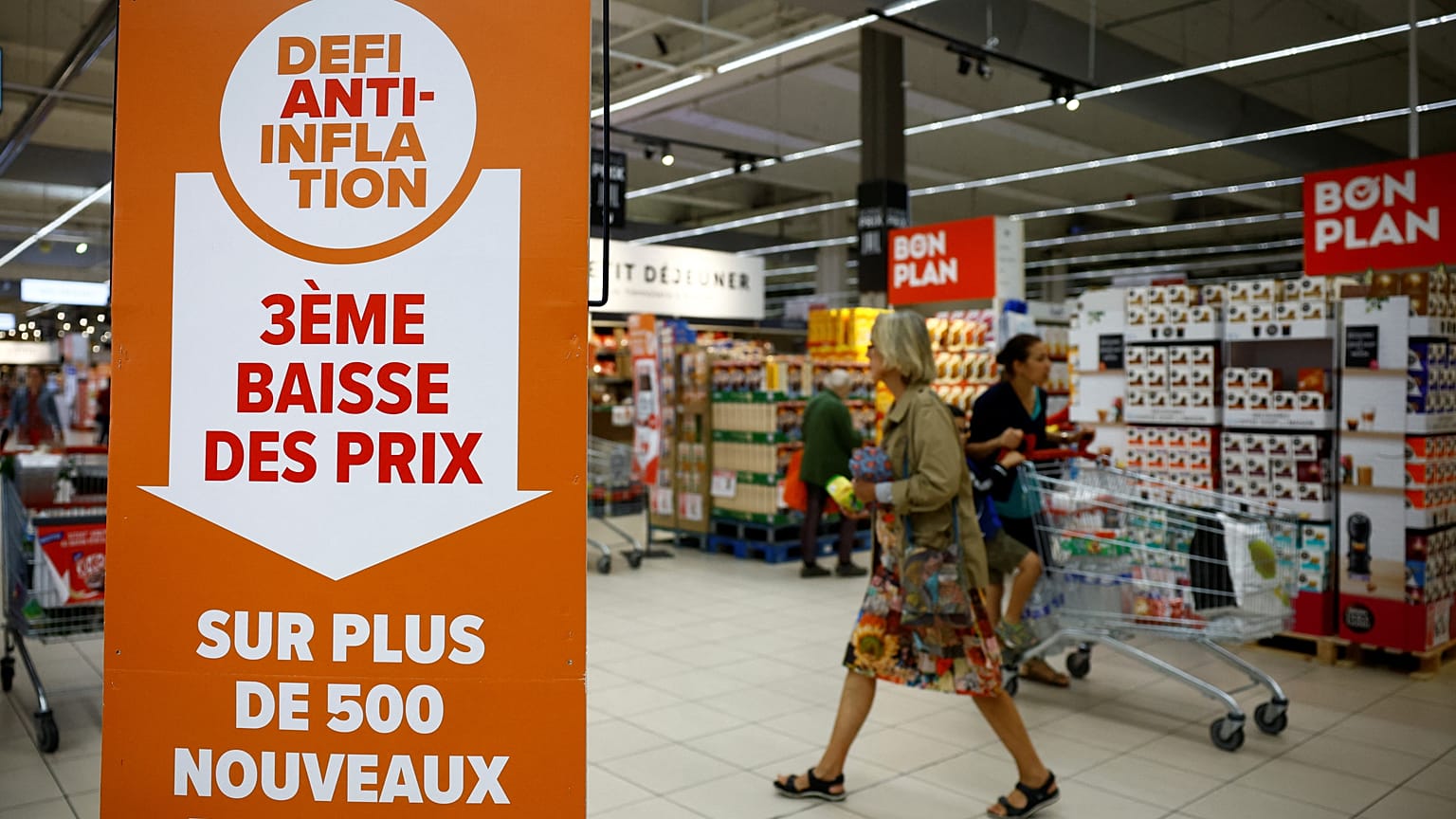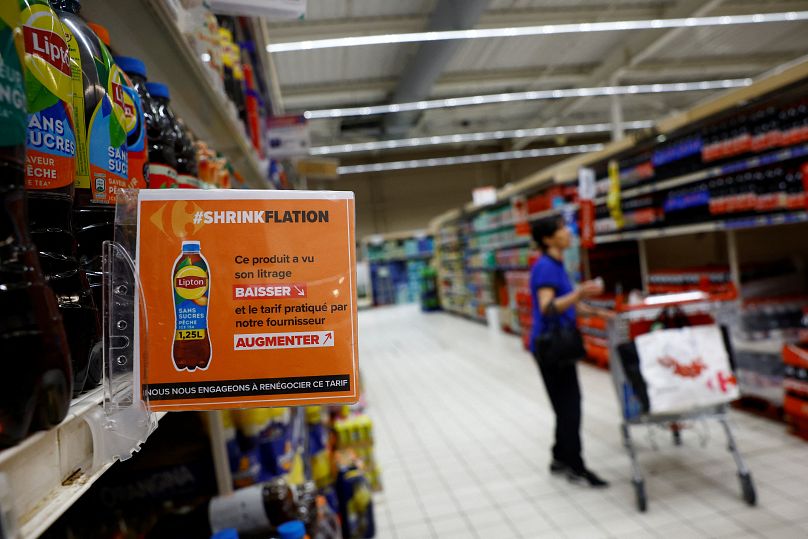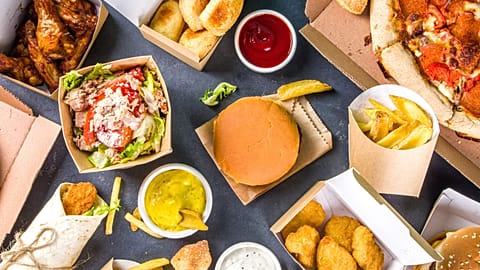Ever heard about shrinkflation? It happens when manufacturer's make smaller product but fail to change prices. It's not a new practice but it's being increasingly noticed in France by consumers as costs rise for everyday foods and provisions.
If you're shopping at a major supermarket in France these days, you'll likely see advertising posters warning of shrinkflation.
The Carrefour chain has decided to name and shame brands by marking 26 products with labels reading, "This product has seen its volume or weight fall and the effective price by the supplier rise."
For example, Carrefour said a bottle of sugar-free peach-flavoured Lipton Ice Tea, produced by PepsiCo, shrank to 1.25 litres from 1.5 litres, resulting in a 40% effective increase in the price per litre. Guigoz infant formula produced by Nestle went from 900 grams to 830 grams, while Unilever's Viennetta ice-cream cake shrank to 320 grams from 350 grams.
"Obviously, the aim in stigmatising these products is to be able to tell manufacturers to rethink their pricing policy," Stefen Bompais, director of client communications at Carrefour, said in an interview.
Battle lines drawn
Will this move help to rally consumer support as French supermarkets will be facing the world's biggest brands very soon in contract talks?
According to consumer groups, supermarkets like Carrefour are also guilty of shrinkflation in their private label products.
This marketing practice of reducing the size of a product, while maintaining the price is taking hold as food prices in France shot up 11.1% in August compared to last year.
According to a recent study, 72% of French people noticed having smaller quantities in some products sold at the same price or even more expensive than before.
Less is more: Has the Big Tasty become the Little Tasty?
On social media, several customers have recently been pointing the finger of blame at fast food giant McDonald's over the size of its new "Big Tasty" burger.
"The Big Tasty has now become the Little Tasty" says this consumer on X (formerly known as Twitter).
According to the French newspaper "Le Parisien", the format of the Big Tasty has changed since August 29 in most McDonald's restaurants. From 868 calories for the old version of the famous sandwich, the new one only has 663.
In contrast to the diminished servings in McDonald's or in supermarkets, the controversy over the issue is spreading fast across social media and the airwaves.
When grilled over the issue last week, the French Finance Minister Bruno Le Maire pledged to protect consumers by changing the law.
In an interview with the French TV channel France Info, and then later on X he said: "Some manufacturers are reducing the content of their products, while keeping the same packaging and sometimes raising the price. This is outrageous! In October, we're going to enshrine in law an obligation to visibly display the reduction in content when the packaging is the same."
France, like other European countries, has been trying for months, with mixed results, to ease consumer pain in the face of a surge in the cost of living.
Le Maire said last month consumer goods companies and retailers had agreed to bring forward annual price negotiations - which would normally have taken place next year - to September. The talks will result in price cuts from January, he said.
In the meantime, to try and avoid getting less for more, pay particular attention to the price per weight of your everyday products.



















